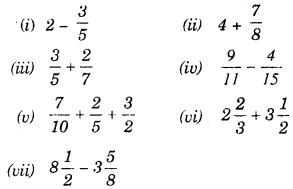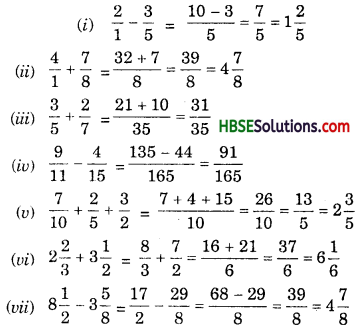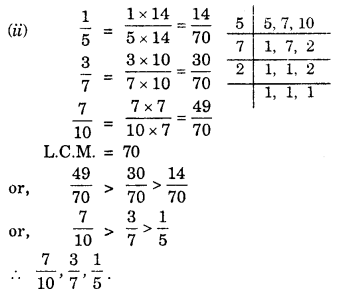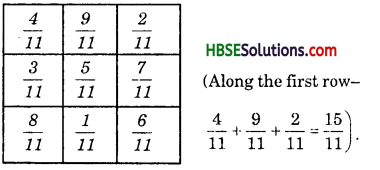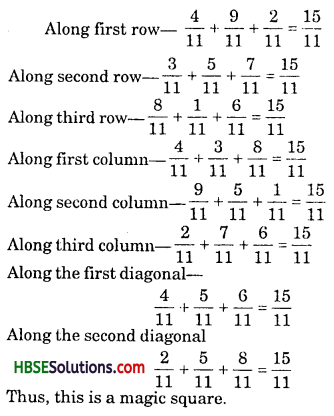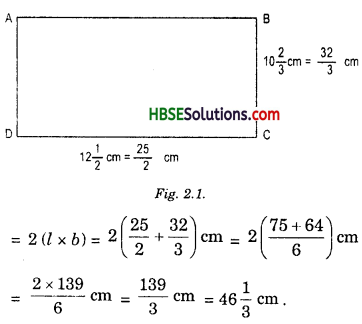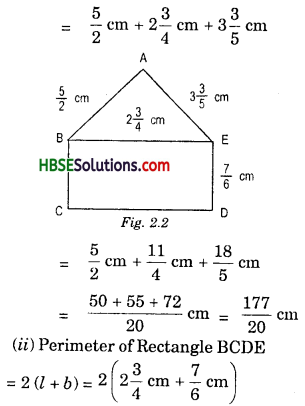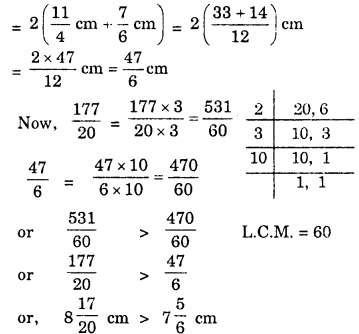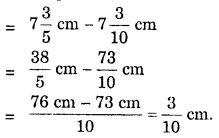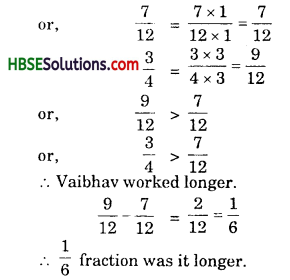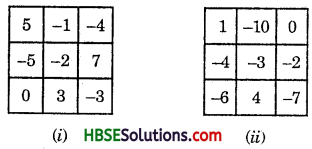Haryana Board 7th Class English Solutions Honeycomb Chapter 10 The Story of Cricket
HBSE 7th Class English The Story of Cricket Textbook Questions and Answers
Comprehension Check
Question 1.
Cricket is originally a / an ___________.
(a) Indian game.
(b) British game.
(c) International game.
Mark the right answer.
Answer:
(b) British game.
Question 2.
‘There is a historical reason behind both these oddities.’ In the preceding two paragraphs, find two words/phrases that mean the same as ‘oddities’.
Answer:
‘Peculiarities’ and ‘Curious’ mean same as oddities.

Question 3.
How is a cricket bat different from a hockey stick?
Answer:
Till the middle of the eighteenth century bats were roughly of the same shape, curving outwards at the bottom. But now cricket bat is straight while hockey bat remains curved.
Comprehension Check
Write True or False against each of the following sentences:
(а) India joined the world of Test cricket before independence. ___________
(b) The colonisers did nothing to encourage the Parsis in playing cricket. ___________
(c) Palwankar Baloo was India’s first Test captain. ___________
(d) Australia played its first Test against England as a soverign nation. ___________
Answer:
(a) True
(b) True
(c) False
(d) False.
Comprehension Check
Question 1.
A ‘professional’ cricket player is one who makes a living by playing cricket. Find the opposite of ‘professional’ in the last paragraphs.
Answer:
Amateur
Question 2.
In ‘the triumph of the one-day game’, ‘triumph’ means
(i) superiority to Test cricket.
(ii) inferiority to Test cricket.
(iii) achievement and success over Test cricket.
Mark the right answer.
(iv) popularity among viewers.
Answer:
(iv) popularity among viewers.
Question 3.
‘………. the men or for whom the world is a stage’.
(i) It refers to famous cricket fields in the world.
(ii) It means the there are many cricket playing countries in the world.
(iii) It implies that cricketers are like actors and every cricket ground is like the stage on which the drama of a cricket match is enacted the world over.
Working With The Text
Question 1.
Name some stick and ball games that you have witnessed or heard of.
Answer:
Hockey, Polo, Billiards are some of the games I have heard of.
Question 2.
The Parsis were the first Indian community to take to cricket. Why?
Answer:
Parsis were brought into British contact to westernise. They had contact because of their interest in trade.
Question 3.
The rivalry between the Parsis and the Bombay Gymkhana had happy ending for the former. What does ‘a happy ending’ refer to?
Answer:
‘Happy ending’ refers to the beating of Bombay Gymkhana by Parsi club at cricket in 1889.

Question 4.
Does cricket owe its present popularity to television? If so, why?
Answer:
Television coverage increased the audience into the small towns and villages. It also helped the children watch their heroes into action. Children could now watch international events.
Question 5.
Guess why cricket has a large viewership in India, not in China or Russia.
Answer:
The reasons are mainly that India is one of the oldest cricket playing nations. Secondly, it has the largest market for the cricketing world.
Question 6.
What do you understand by the game’s (cricket) ‘equipment’?
Answer:
Cricket equipment refers to the bat made of leather, twine and cork. The equipment like bat and ball are even today handmade.
Question 7.
How is Test cricket a unique game in many ways?
Answer:
Test cricket can be played for five days and still end in a draw. No other game can take more than a day. Secondly, the dimensions of the cricket ground is not specified. It can vary from a circular to an oval shape.
Question 8.
How is cricket different from other team games?
Answer:
Unlike other team games the dimensions of the cricket ground are not specified. Secondly cricket is the only game which can go as long as five days and end in a draw. No other game can take more than one day.
Question 9.
How have advances in technology- affected the game of cricket?
Answer:
Modern technology brought about a change in equipment. The invention of vulcanised rubber led to the introduction of pads and gloves. Secondly, satellite television technology made the game very popular. It could now be watched in every city and village.
Question 10.
Explain how cricket changed with changing times and yet remained unchanged in some ways.
Answer:
The cricket changed with changing times. The amateur players were replaced by paid professionals. One day itemational became more popular. Technology also brought about a great change. But still the roots remain true to the origin in rural England. Cricket’s most important equipments are still handmade. The protective equipments has been unfluenced by change of technology.
HBSE 7th Class English The Story of Cricket Important Questions and Answers
Very Short Answer Type Questions
Question 1.
What does ‘amateurs’ stand for?
Answer:
‘Amateurs’ were the pioneers of cricket. They were the rich people who could afford to play cricket for pleasure.
Question 2.
Who are professionals in cricket?
Answer:
The professionals were those who were paid-up players. They played cricket to earn their living.
Question 3.
What led to the replacement of a curved-fat by a straight one?
Answer:
During the 1760s and 1770s it became common to pitch the ball through the air rather than roll it along the ground. This resulted in replacement of curved bat with straight one.
Question 4.
What hardships had the Parsis to undergo when they set up the cricket club?
Answer:
The Parsis were the first Indian community to set up a cricket club. They were not encourgage and not even allowed to use public park.

Question 5.
How did bowlers benefit by the change of pitching the ball through the air rather than roll in along the ground?
Answer:
Bowlers got option of length, increased pace. They also immitated skill of spin and swing.
Question 6.
Who funded the Parsi Clubs?
Answer:
Parsis formed the first Indian Cricket Club in Bombay in 1848. They were funded and sponsored by Parsi businessmen like the Tatas and Wadias.
Question 7.
Why is the name of C.K. Nayudu even not forgotten today?
Answer:
Even today he is remembered as an outstanding batsman of his times. His place in Indian cricket is assured because he was the country’s first Test captain.
Short Answer Type Questions
Question 1.
Which were the first Indian community to set up a cricket club? What competition did it face?
Answer:
Parsis were the first Indian community to set up a cricket club. It faced many problems.
- The white people did not encourage the Parsis.
- They had to face a quarrel with the Bombay a white’s only club over the use of. a public park. The whites used the park for playing polo and had made the place uneven.
Question 2.
What was the shape of the bat till eighteenth century? What advantage did it give to the batsman?
Answer:
Till the middle of the eighteenth century bats were roughly the same shape as hockey-sticks curving outwards at the bottom. It helped batsman because the ball was bowled under arm, along the ground. The curve at the end of the bat gave the batsman best chance of making the contact.
Question 3.
What changes were made in the cricket game since its inception?
Answer:
Cricket as a game was started in 17th century. With the changing social and economic history changes were brought:
- The curved bat was replaced by straight one.
- The weight of the ball was limited between 5 1/2 to 5 3/4 ounces
- The width of the bat was limited to four inches
- The protective equipments were used.
Question 4.
How have global commerce and technology effect change in game of cricket?
Answer:
Global commerce and technology have made Indian players the most famous and best- paid players. The change was brought about as gentlemanly amateur was replaced by paid- professionals. The one day game over shadowed. Test cricket in terms of popularity.
Some Other Questions For Examination
Question 1.
What was the shape of the bat till the middle of 18th century?
Answer:
The bat was shaped like a hockey stick curving outwards at the bottom.
Question 2.
Why was the curved shape of the bat necessary?
Answer:
The curved shape of the bat was necessary because the ball was bowled along the ground.
Question 3.
What were helmets made of?
Answer:
Helmets were made out of metal and man-made light weight materials.
Question 4.
What has made cricket such a popular game?
Answer:
Multinational television companies have made cricket such a popular game.

Question 5.
How has the cricket evolved in England?
Answer:
The cricket evolved in England from many stick and ball games which were played there.
Question 6.
Which two games have their tools made with industrial or man-made materials?
Answer:
Golf, tennis.
Question 7.
Who was Palwankar Baloo?
Answer:
Palwankar Baloo was the greatest Indian slow bowler at the time when Indians were not allowed to play Test cricket.
Question 8.
What led to the replacement of a curved bat by a straight one?
Answer:
During the 1760s and 1770s, it became common to pitch the ball through the air rather than roll it along the ground. This resulted in replacement of curved bat with straight one.
Question 9.
Cricket was the earliest modern team sport to be codified. What does the word ‘codified’ indicate?
Answer:
The word ‘codified’ indicates the law of cricket.
Question 10.
A cricket match can end in a ‘draw’. What does the word ‘draw’ refer to?
Answer:
The word ‘draw’ refers to the concept that game ends up and no team can be declared a winner team.
Question 11.
What were the revolutionary changes brought about in the game of cricket by the pitching of the ball through the air?
Answer:
Many revolutionary changes were brought about in the game of cricket by the booling action of pitching the fall in the air. It provided the bowlers the option of length, deception through the air besides the increased pace. It brought about novel and fabulocus opportunities of spin and swing.
Besides, the pitching of the ball through the air also affected the batsman. The batsman was required to master timing and shot selection. The replacement of the current bat with the straight bat was its instant result.
Multiple Choice Questions (MCQ)
Tick (✓) the correct option :
1. Where was cricket born?
(a) India
(b) China
(c) U.S.A.
(d) England
Answer:
(d) England
2. When was cricket accepted as a distinct game?
(a) 19th century
(b) 18th century
(c) 17th century
(d) 14th century
Answer:
(c) 17th century
3. What does ‘protective equipment’ refer to in the game of cricket?
(a) pads
(b) gloves
(c) helmets
(d) all of these
Answer:
(d) all of these
4. When were pads introduced in cricket?
(a) 1948
(b) 1857
(c) 1848
(d) 1863
Answer:
(c) 1848
5. What has been the shift in the head office of cricket?
(a) from London to Dubai
(b) from London to India.
(c) from India to U.S.
(d) from Dubai to London
Answer:
(a) from London to Dubai

6. When were the first written ‘laws of cricket’ formed?
(a) 1747
(b) 1844
(c) 1743
(d) 1744
Answer:
(d) 1744
7. What is the specified length of pitch in the game of cricket?
(а) twenty-seven yards
(b) twenty-two yards
(c) twenty-five yards
(d) twenty-four yards.
Answer:
(b) twenty-two yards
8. Which of the following statements is incorrect?
(а) The shape and the size of the cricket ground has been specified.
(b) Cricket’s most important tools are all made of natural, pre-industrial materials.
(c) Three days had become the length of cricket match by 1780.
Answer:
(а) The shape and the size of the cricket ground has been specified.
9. The cricket bat is made with __________.
(a) leather
(b) twine
(c) cork
(d) all of these
Answer:
(d) all of these
10. When did India enter the world of Test cricket?
(a) 1943
(b) 1933
(c) 1932
(d) 1957
Answer:
(c) 1932
11. The first Test cricket was play between __________ and __________.
(a) India, England
(b) England, Australia
(c) India, Australia
(d) India, China
Answer:
(b) England, Australia
12. Who are professionals in cricket?
(a) paid-up players
(b) trainers
(c) umpires
(d) unskilled players.
Answer:
(a) paid-up players
13. Which of the following words means ‘supreme’? ‘
(a) dominated
(b) benefited
(c) independent
(d) sovereign
Answer:
(d) sovereign
14. Who was chosen to give decisions in cricket?
(a) batsmen
(b) bowlers
(c) audience
(d) umpires
Answer:
(d) umpires
Make Sentences
Make sentences of your own with the help of the following words :
1. Transformation
2. Struggle
3. Memories
4. Pionfeers
5. Authorities
6. Foundation
7. Assured
8. Absolutely
9. Fortunate
10. Intellectual.
Answer:
1. Transformation : The village has undergone a transformation recently with new houses having been built there.
2. Struggle: Many great leaders were killed in the struggle for freedom.
3. Memories : The memories of my childhood are very pleasant.
4. Pioneers : He was one of the early pioneers of recording.
5. Authorities: The municipal authorities were powerless and inactive.
6. Foundation : Suddenly, there was a strong earthquake that shook the foundation of the jail.
7. Assured : There is one area women can rest assured will never change, their role in the home.
8. Absolutely : She knew absolutely nothing about new neighbours.
9. Fortunate : I am fortunate to be born in such a good family.
10. Intellectual : The seminar was very effective for intellectual curiosity of artists and scientists.
The Story of Cricket Passages for Comprehension
Read the following passages carefully and answer the questions that follow :
PASSAGE – 1
Till the making contact.
Questions :
(i) What was similarity between cricket and hockey stick?
(ii) Why were the bats curved at the bottom?
(iii) When did this game come to be recognized?
(iv) Choose a word which means ‘bent’.
Answers :
(i) The cricket and hockey stick were initially of the same shape. Both were curving outwards at the bottom.
(ii) The bats were curved because the ball was bowled under arm.
(iii) This game gained recognition in seventeenth century.
(iv) Curve.
PASSAGE – 2
One of a-half.
Questions :
(i) Why is cricket referred to as a peculiar game?
(ii) What does the word ‘draw’ refer to?
(iii) In terms of time how can you say that football is superior to cricket?
(iv) Choose a word which means ‘strangeness’.
Answers :
(i) Cricket can be played for five days and ends up without any result.
(ii) ‘Draw’ refers to the concept that game ends up and no team can be declared a winner team.
(iii) A football match can be played in one and half-an-hour while cricket match can take five days.
(iv) Peculiarities.

PASSAGE – 3
There’s a all disputes.
Questions :
(i) Which oddities are referred to?
(ii) What does word ‘codified’ indicate?
(iii) Who was chosen to give the decision?
(iv) Choose the word which means ‘disagreement’.
Answers :
(i) The cricket match can go for five days and end in a draw. Secondly the size and shape of cricket ground is not specified.
(ii) The word codified indicates the laws of cricket.
(iii) The umpires were chosen to give the decision.
(iv) Disputes.
PASSAGE – 4
This change ………………. straight one.
Questions:
(i) Which ‘change’ gave bowler option of length?
(ii) How did this change help the batsman?
(iii) What advantage did batsman now enjoy?
(iv) Choose the word which means ‘chance’.
Answers:
(i) It had become to pitch the ball through the air rather than roll along the ground.
(ii) Any player, regardless of their area of special skill, is referred to as a batsman, batswoman or batter while they are batting.
(ii) The batsman learnt new possiblities of spin and swing.
(iii) Possibilities
PASSAGE – 5
The material in Asia.
Questions :
(i) Of which material bat was made initially?
(ii) What change has taken over years in manufacturing of bat?
(iii) How did the cane become available?
(iv) Choose the word which means “found”.
Answers :
(i) Initially, bat was made of leather, twine and cork.
(ii) Earlier bat was cut out of a single piece of wood which has been replaced by two pieces.
(iii) The cane become available to the European colonialists as they settled in Asia.
(iv) Available.
The Story of Cricket Translation in Hindi
Before you read
Sport is …………….. called cricket?
खेल स्वस्थ जीवन का अटूट हिस्सा है। यह एक ऐसा तरीका है जिससे हम अपना मनोरंजन करते हैं, प्रतियोगिता करते हैं और स्वस्थ रहते हैं। अनेक खेलों जैसे हॉकी, फुटबाल, टेनिस और क्रिकेट में से क्रिकेट आज सबसे अधिक राष्ट्रीय स्तर पर मनोरंजन – का साधन है। हम सब क्रिकेट खेल के बारे में वास्तव में क्या जानते हैं।
Word Meaning : Integral-complete = अटूट, Amuse-cause laughter = मनोरंजन, Competerivalary = प्रतिस्पर्धा करना, Appealing-to like = पसन्द करना, Entertainment-amusement = मनोरंजन।
1.Cricket grew ……………..distinet game.
क्रिकेट का जन्म 500 वर्ष पूर्व इंग्लैंड में स्टिक और बॉल खेलों में से हुआ। ‘बैट’ प्राचीन अग्रेजी का शब्द है जिसका अर्थ है स्टिक या क्लब। सत्रहवीं सदी से क्रिकेट को एक विशेष खेल के रूप में पहचाना जाने लगा।
Word Meaning : Simply-plain = स्पष्ट, Recognisable-which can be recognised = पहचान योग्य, Distinet-perceptible = विशिष्ट।
2. Till the …………………….. making contact.
अठारहवीं सदी तक बैट का आकार हॉकी स्टिक की तरह था, नीचे से बाहर की तरफ निकलता हुआ। इसका एक सरल कारण था कि गेंद को बाजू के नीचे से फेंका जाता था बल्ले के नीचे की मोड से बल्लेबाज को गेंद से मिलने सबसे अच्छा मौका मिलता था।
Word Meaning : Roughly–uneven = ऊबड़-खाबड़, Curving-which is currved = मुड़ा हुआ. Contact-meet = मिलना।
3. One of ……………….. modern cricket!
किक्रेट की अजीब विशेषताओं में से एक है कि टैस्ट मैच पाँच दिन तक चल सकता है, फिर भी अन्त में यह बिना नतीजे के समाप्त हो जाता है। और कोई भी आधुनिक खेल आधे समय से भी अधिक समय नहीं लेता। एक फुटबाल मैच को ज्यादातर डेढ़ घंटा लगता है। बेसबाल की नौ पारी खेलने में क्रिकेट के सीमित ऑवर के मैच से आधा समय लगता है। जो आधुनिक किक्रेट का छोटा रूप है।
Word Meaning : Peculearities distinct features = विशेषताएँ. Generally-mostly = सामान्यतः, Innings-beingplayed by one team =खेलने की पारी, Version-form = रूप, Limited-Restricted = सीमिता
4. Another curious ………………. in Delhi.
क्रिकेट की दूसरी विशेषता यह है कि इसकी पिच की लम्बाई पूर्ण रूप से निर्धारित की जाती है बाईस- गज-पर मैदान की लम्बाई और आकार को निर्धारित नहीं किया जाता। बाकी दूसरे टीम वाले खेलों जैसे हॉकी और फुटबाल में खेलने के क्षेत्रफल को निर्धारित किया जाता है। क्रिकेट में नहीं किया जाता। मैदान कई आकार के हो सकते हैं जैसे एडिलेड ओवल (अंडाकार) या लगभग गौलाकार जैसे चेन्नई में चेप मैदान मेलबोर्न क्रिकेट मैदान में छक्का बनाने के लिए फिरोज शाह कोटला मैदान, दिल्ली की तुलना में अधिक जगह की जरूरत पड़ती है।

Word Meaning: Curious-eager to know = ‘उत्सुक, Characteristics -qualities = विशेषताएँ, Specified-fixed = निर्धारित, Dimensions-size in terms of length and width = आकार।
5. There’s a ……………………… all disputes.
इन दोनों अनोखेपन के पीछे एक ऐतिहासिक कारण रहा है। आधुनिक खेलों में किक्रेट सबसे पहले नियमबद्ध किया गया। क्रिकेट के नियमों को 1744 में सर्वप्रथम लिखा गया। नियमों में कहा गया सारे मूल नियम दो सन्जन पुरुष जो कि अम्पायर कहलाए जाएंगे, वह सारे मामले हल करेंगे।
Word Meaning : Historical-pertaning to history= ऐतिहासिक.Codified-collection of laws: नियमबद्ध करना, Principals First importance = आधारभूत, absolutely-completely = पूर्ण रूप से, Disputes-to argue = विवाद करना, Umpiresthose who give decision = अम्पायर।
6. The stumps ………………….. theground.
स्टंप 22 जरूर ऊँचे होने चाहिए और उनके ऊपर रखी जाने वाली बेल 6 इंच की गेंद का भार 5 से 6 औंस होना चाहिए और दो स्टंप के बीच 22 गज का अंतर होना चाहिए। दुनिया का सबसे पहला क्रिकेट क्लब हैमबल्डन में 1760 में बना। मैरीलिबोन क्रिकेट क्लब 1787 में बना। 1760 और 1770 के बीच में गेंद को जमीन में घसीटने की बजाए हवा में उछालना ज्यादा प्रचलित हो गया।
Word Meaning : Pitch = पिच, Formed to construct = बनाना, Roll-to turn around = गोल घुमाना, Ground-open space = मैदान।
7. This change ………………. straight one.
इस बदलाव ने गेंदबाज को लम्बाई का विकल्प, हवा में उछालना और बढ़ती गति का योगदान दिया। इससे फिरकी और उछालने के नए तरीकों की संभावनाएँ सामने आई। इसके जवाब में बल्लेबाज को समय के चयन का और शॉट चुनने का पूर्ण ज्ञान प्राप्त करना पड़ा। इसके फलस्वरूप मुड़े हुए बल्ले को एकदम सीधे बल्ले में बदल दिया गया।
Word Meaning : Option-choice = विकल्प, Deception-a trick = छल, Increased -to increase = बढ़ोत्तरी, Pace-speed = गति, Possibilities-chance = संभावना, Responsereply = जवाब, Immediate-at once = एकदम, Curved-bent = TGI GATTI
8. The weight ……………….. cricket ball. गेंद का भार पाँच औंस के बीच और साढ़े पाँच औंस चौड़ाई को चार इंच तक सीमित कर दिया गया। 1774 में ‘पहला पगबाधा नियम’ प्रकाशित किया। इसी समय के लगभग तीसरी स्टंप प्रचलित हो गई थी। 1780 तक मुख्य मैच के तीन दिन का समय निर्धारित किया गया, और उसी वर्ष ही छ: क्रिकेट गेंद का प्रचलन हुआ।
Word Meaning : Limited-restricted = सीमित, Published–to be printed = प्रकाशित, Stump-one of the sticks of a wicket = स्टंप, Major-chief = प्रमुख. Creation-toform = सृजन।
9. If you …………………. over time. अगर तुम खेल के यंत्र देखोगे, तुम देख सकते हो कि क्रिकेट बदलते समय के साथ-साथ कैसे बदल रहा है। नहीं फिर भी मौलिक रूप से यह ग्रामीण इंग्लैंड से जुड़ा है। क्रिकेट के सबसे महत्वपूर्ण उपकरण प्राकृतिक, मशीन युग से पहले के तत्त्वों के बने है। बल्ला चमड़े, सुतली और कार्क से बनता है। आज भी बल्ला और गेंद मशीनों से नहीं बल्कि हाथ से बनाए जाते हैं। समय के अनुसार बल्ले का पदार्थ कुछ बदलता गया।
Word Meaning: Material-hatter of which athing is made = पदार्थ, Equipment-things = साज-सज्जा, उपकरण Fundamentally-pertaining _to basic principals = मूल आधार, Origins-roots = उत्पत्ति, Industrially-developmentofmachines – औद्योगिक, Manufactured-to prepare by machinery = निर्माण करना, Slightly-alittle = थोड़ा।
10. Once it ………………….. firmly rejected.
एक बार इसको लकड़ी के एक ही टुकड़े से काटा गया। अब यह दो टुकड़ों से बनता है। इसके ब्लेड सरपत के पेड़ की लकड़ी से बनते हैं और हैन्डल बेंत से बनाया जाता है। बेंत तब पाया गया जब यूरोपियन उपनिवेशो ने व्यापारी कंपनियों ने अपने आप को एशिया में स्थापित किया। गोल्फ और टैनिस के विपरीत क्रिकेट ने यंत्रों को मशीनों द्वारा या मनुष्य द्वारा बनाए गए तत्व जैस प्लास्टिक फाइबर ग्लास और धातु से बनाने के लिए सखित से मना कर दिया।
Word Meaning : Willow-a plant with plaint branches = सरपत, Cane hollow read or grass , ColoniatistsSettlers in a new coun try = उपनिवेश, Established-Tbestablish = स्थापित, Remake-tomahe again = दुबारा बनाना, Rejected– to refuse = मना करना।
11. But in ………lightweight materials.
पर रक्षक के लिए चीजें बनाने के लिए क्रिकेट पर प्रौद्योगिकी बदलाव का बहुत प्रभाव पड़ा। जब रबड़ के गुण को गुण बदलने की खोज की गई तब 1848 में पैड (Pads) का अविष्कार किया गया। बाद में रक्षक दस्ताने बनाए गए। और आधुनिक खेलों को हम धातु से बने बिना हेलमेट की सोच नहीं सकते। और हल्के भार के तत्व नाइलन के बनाए जाते हैं।
Word Meaning : Protective-Affording protection = रक्षक, Equipment-act ofequiping = सजावट, Influanced-Effect = प्रभाव, Technological-Pertaning to technology = प्रौद्योगिकी, Valcanisation to change property of rubber = रबड़ के गुण बदलने की विधि, Gloves-Worn on Hands = दस्ताने, synthetie-nylon = नाइलोन।
12. The origins
भारतीय खेल का आरंभ मुम्बई में हुआ। उस समय भारत का एक छोटा समुदाय जिसने खेल शुरू किया, वह पारसी धर्म के अनुयायी थे। अपनी व्यापार में रूचि के कारण वह ब्रिटिश के समीप आ गए। और यही पहली समुदाय थी जो पश्चिम की ओर आकृष्ट हुआ। पारसी ने पहला भारतीय क्रिकेट क्लब बनाया। यह मुम्बई में 1848 में ओरियंटल क्रिकेट क्लब के नाम से स्थापित किया गया।
Word Meaning : Zorastrian-Follower of Parsi religion = पारसी धर्म का अनुयायी. Community People of particular area = समुदाय, Contact-Come close = सम्पर्क में आना, Westernise-tending towards the west = पश्चिम की ओर उन्मुख होना।
13. Parsi clubs …………………. the surface.
पारसी क्लबों को पारसी व्यापारियों जैसे टाटा और वाडिया के द्वारा वित्तीय सहायता तथा प्रोत्साहन दिया जाता था। भारत में श्वेत अभिजात क्रिकेट ने पारसी समुदाय को कोई सहायता प्रदान नहीं की। वास्तव में बम्बई जिमखाना, जिसमें केवल श्वेत ही खेल सकते थे पारसी क्रिकेट खिलाड़ियों के बीच में एक सार्वजनिक | पार्क के ऊपर विवाद उत्पन्न हो गया। पारसी समुदाय ने शिकायत की कि पार्क खेलने लायक नहीं रहा क्योंकि पोलो के खेल के लिए बंबई जिमखाना ने पार्क को खोद दिया था।
Word Meaning:Funded Financial assis| tance = कोष (अर्थ) की सहायता देना, Sponsoredsupported = प्रवर्तित किया, Elite-high class = उच्च श्रेणी, Enthusiastic-curious to knew = उत्सुक, Public park-common park = सार्वजनिक पार्क।
14. When it…………………… Indian cricket.
जब यह बात स्पष्ट हो गई कि ब्रिटिश शासक अपने हमवतन पारसी समुदाय के प्रति पक्षपात दिखा रहे थे। तब पारसी समुदाय ने क्रिकेट खेलने के लिए अपना अलग जिमखाना बना लिया। पारसी और बंबई जिमखाना के पथ-प्रदर्शकों की दुश्मनी अंत भारतीय क्रिकेट के लिए बहुत सुखद रहा।
Word Meaning: Authorities–having influence = प्रशासक, Prejudiced-opinion formed before hand = पक्षपात, Compatriots-afellow countryman = हमवतन, Rivalry-enmity = दुश्मनी, Pioneers-to be first in act = पथ-प्रदर्शक।
15. AParsi ………………. DadabhaiNaoroji. 1889 में पारसी टीम ने बंबई जिमखाना को हरा दिया। यह घटना भारतीय राष्ट्रीय कांग्रेस की स्थापना के सिर्फ चार वर्ष बाद घटी। यह संस्था बहुत अच्छी किस्मतवाली सिद्ध हुई क्योंकि इसके सर्वप्रथम नेताओं में पारसी नेता दादाभाई नौरोजी भी थे। जो बहुत अनुभवी राजनेता और प्रतिभाशाली व्यक्ति थे।
Word Meaning: Foundation-basics = आधार, Organisation-oct of organizing = संगठन, Statesman-a great leader = अनुभवी राजनेता, Intellectual talented = प्रतिभाशाली।
16. Modern cricket ………….. Test cricket.
आधुनिक क्रिकेट जो राष्ट्रीय स्तर पर खेला जाता है, टैस्ट मैच को और एक दिवसीय अंतराष्ट्रीय मैचों ने अपना प्रभुत्व जमा लिया है। वह खिलाड़ी प्रसिद्ध हुए जो लोगों पर एक छाप छोड़ देते हैं और जिन्होंने अपने देश का नेतृत्व किया है। आज भी वह खिलाड़ी भारतीयों द्वारा याद किए जाते हैं जिन्हें टैस्ट क्रिकेट का अवसर मिला।
Word Meaning : Dominated-to rule = प्रभुत्व, Famous-well-known = प्रसिद्ध, Memoriesto remember = याद में, Fortunate: भाग्यशाली।
17. C.K.Nayudu……………… Test captain.
सी.के. नाइडू अपने समय का विशिष्ट बल्लेबाज आज भी लोगों के लिए एक कल्पना है जबकि उसके कुछ समकालीन खिलाड़ी जैसे पलवनकर विठल और पलवनकर बालू भूले जा चुके हैं। नायडू क्रिकेट के शिखर से तभी गुजर चुके थे जब उन्होंने 1932 में इंगलैंड के विरुद्ध पहला टेस्ट मैच खेला था। उनका स्थान भारतीय क्रिकेट इतिहास में इसलिए विश्वसनीय है क्योंकि वह देश के पहले टेस्ट मैच के कप्तान थे।
Word Meaning : Outstanding-Promi. nent = विशिष्ट, Popular-well-known = प्रसिद्ध, Imagination-anidea = कल्पना, Contemporaries-belonging to some time or period = समकालीन, Assured-confident = Fridal

18. India entered…….. sovereign nations. 1932 में भारत ने पहले टेस्ट मैच में प्रवेश किया, यह भारत की स्वतंत्रता से पन्द्रह वर्ष पूर्व की घटना थी। यह इसलिए संभव हुआ क्योंकि 1877 में जब टैस्ट क्रिकेट का अभ्युदय हुआ तब यह ब्रिटिश साम्राज्य के हिस्सा के बीच प्रतियोगिता थी न कि प्रभुत्व सम्पन्न राज्यों में।
Word Meaning : Origin-root = उदगम्, Independent-free = आजाद, Contest-competition = प्रतियोगिता, Sovereign-supreme power = प्रभुत्व।
19. The first ……………………… World War.
पहला टेस्ट मैच इंग्लैंड और आस्ट्रेलिया के बीच में खेला गया जब आस्ट्रेलिया उस समय तक थी अंग्रेजों के अधीन था। इसी प्रकार कैरिबियन के बहुत सारे छोटे देश जो सब मिलकर वैस्टइंडीज की टीम बनाते हैं यह देश द्वितीय विश्व युद्ध तक ब्रिटिश के अधीन थे।
Word Meaning : Similarly-alihe = जैसे, White settler-British = श्वेत निवासी (अंग्रेज)।
20. Television coverage ……. their heroes.
टेलीविजन के प्रसारण-क्षेत्र ने क्रिकेट को बदल दिया। इसके प्रसारण से क्रिकेट छोटे शहरों और गाँवों में पहुंच गई। और खेल के दर्शकों में बहुत बढ़ोत्तरी हो गया। इससे क्रिकेट का सामाजिक स्तर भी बहुत बढ़ गया। बच्चे जिन्हें पहले कभी अन्तर्राष्ट्रीय क्रिकेट देखने का मौका नहीं मिला था, क्योंकि वह बड़े शहरों से बाहर | रहते थे, अब वह देखकर अपने नायकों का अनुकरण कर सकते हैं।
Word Meaning : Heroes-super human power = अभिनेता, Imitating-to initate = अनुकरण करना, Beaming-shining = चमकना, Broadenedwidened = बढ़ोत्तरी, Audience-spectators = दर्शकगण।
21. The technology …………….. South Asia.
सैटेलाइट टेलीविजन की प्रौद्योगिकी से और राष्ट्रीय टेलीविजन प्रसारण के विस्तार से क्रिकेट के लिए वैश्विक बाजार बनाया गया। सिडनी में खेले गए मैचों को सूरत में लोगों द्वारा देखा जा सकता है। क्योंकि भारत में क्रिकेट का खेल देखने वालों में से सबसे अधिक दर्शक थे। और क्रिकेट की दुनिया के लिए बड़ा बाजार अत: इतना मूल केन्द्र दक्षिण एशिया की तरफ स्थानांतरित हो गया।
Word Meaning : Technology-science of industrial arts = प्रौद्योगिकी, Created-to form = बनाना, Global-worldwide = वैश्विक, viewershipspectators = दर्शकगण।
22. This shift. ………………..tax-free Dubai.
One hundred…………………………. a stage.
इस परिवर्तन के कारण आई.सी.सी. का मुख्य कार्यालय लंदन से टैक्स-फ्री दुबई में बदल गया। 150 वर्ष पूर्व पहले भारतीय क्रिकेट खिलाड़ियों, पारसियों को खेलने के लिए खुली जगह के लिए संघर्ष करना पड़ा। आज के विश्व में भारत के प्रसिद्ध खिलाड़ी बहुत बड़ी मात्रा में धन पाते हैं, जिनके लिए दुनिया एक रंगभूमि है।
Word Meaning : Shift-change from one place to another = परिवर्तन, Stage-scene of action = रंगभूमि।
23. This transformation ……..technology.
इस रूपान्तरण से कई छोटे-छोटे बदलाव आए हैं: जो इस क्षेत्र के अध्यवसायी कलाकार थे उनका स्थान पेशेवर कलाकारों ने ले लिया है। धीरे-धीरे एकदिवसीय मैचों ने टैस्ट क्रिकेट पर अपना प्रभाव जमा लिया और विश्व व्यापार व प्रौद्योगिकी के क्षेत्र में बदलाव भी इसी का परिणाम हैं।
Word Meaning : Transformation change = रूपान्तरण या कायापलट, Amateur-first in field = अध्यवसायी, Replacement-to replace = प्रतिस्थापित करना, Triumph-victory = जीत, Remark able-outstanding = सराहनीय, Professional-pertaining to profession = पेशेवर।
The Story of Cricket Summary in English
Cricket grew in England 500 years ago. By 17th century it had gained recognition. Cricket game has many oddities. The main peculiarity unlike other game is that it can be played for five days and end in a draw. The other thing is that length of pitch is specified and not the size or shape of the ground.
First laws of cricket were drawn in 1744. During 1760s and 1770s many changes were observed which opened new possibilities for bowlers. The game equipment is also undergoing changes. Though the ball and bat are still handmade. Only the protective equipment has undergone a change due to technology. The origin of Indian cricket dates back to Bombay where small community of Parsis took to the game. Though Parsis were sponsored by Tatas and Wadias still the whites did nothing to promote their game. Still Parsis had a happy ending by beating Bombay Gymkhana in 1889.
In 1932 India entered the world of test cricket. Television and technology changed the status of cricket to great extent. The children got a chance to watch international cricket. The global market has greatly developed in India. Even today Indian players are the best paid and most famous players. The triumph has been brought about due to changes in global spheres.

The Story of Cricket Summary in Hindi
क्रिकेट इंग्लैंड में 500 वर्ष पूर्व आरंभ हुआ। 17वीं सदी तक इसने एक विशिष्ट स्थान पा लिया था। क्रिकेट खेल में कई विषमताएँ पाई जाती हैं। विशेष रूप से अन्य खेलों के विपरीत इसे पाँच दिनों तक बिना किसी निष्कर्ष पर पहुँचे खेला जा सकता है। दूसरी विशेष बात यह है कि पिच का आकार निश्चित है, पर मैदान का आकार या आकृति निश्चित नहीं है।
1744 में क्रिकेट के पहले सिद्धांत लिखे गए। 1760 और 1770 के दशकों में बदलाव के कारण बल्लेबाजों को और गेंदबाजों कई नई संभावनाओं की छूट मिली।
खेल सज्जा के सामान में बहुत सारे बदलाव देखे जा रहे हैं। जबकि बल्ला और गेंद अभी भी हस्तकला से बनाए जाते है। प्रौद्योगिकी के कारण सिर्फ सुरक्षात्मक उपकरणों में बदलाव आया है। क्रिकेट का आरंभ मुंबई में हुआ। यहाँ पर पारसी समुदाय के लोगों ने खेल का आरंभ किया। पारसी समुदाय को टाटा और वाडिया ने प्रोत्साहन दिया पर फिर भी अंग्रेजों ने इनको बढ़ावा देने के लिए कुछ नहीं किया।
पारसी समुदाय के लिए सुखद था जब उन्होंने 1889 मुम्बई जिमखाना को पराजित कर दिया।
1932 में भारत ने सबसे पहले टेस्ट क्रिकेट खेलना आरंभ किया। टेलीविजन और प्रौद्योगिकी में विस्तार से क्रिकेट का स्वरूप बहुत बदल गया। बच्चों को अन्तर्राष्ट्रीय खेल देखने का अवसर प्रदान हुआ। विश्व क्रिकेट बाजार का विकास भारत में हआ है। आज भी भारत के खिलाड़ी पैसे के संदर्भ में अग्रणी हैं। यह जीत वैश्विक बदलावों के कारण संभव हुई है।
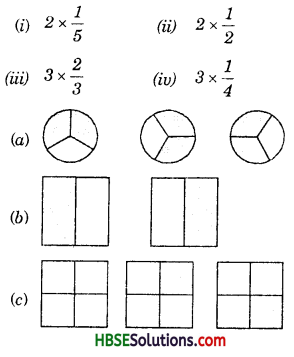

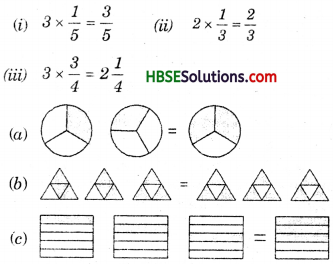
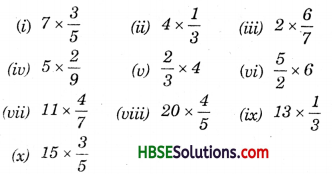
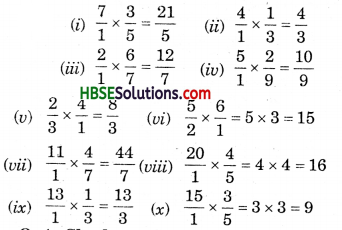
![]()
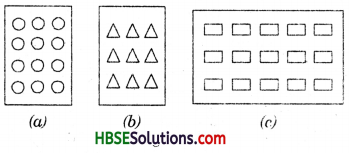
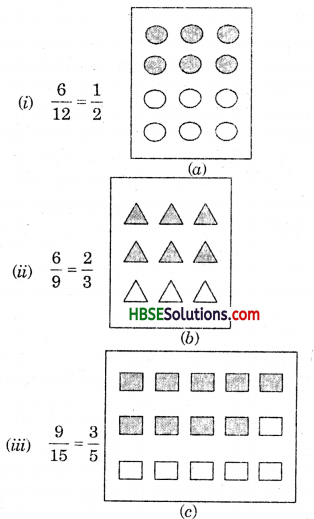

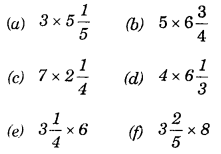

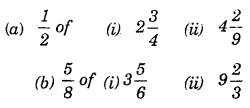
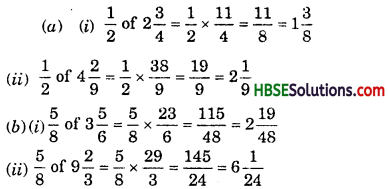
![]()
